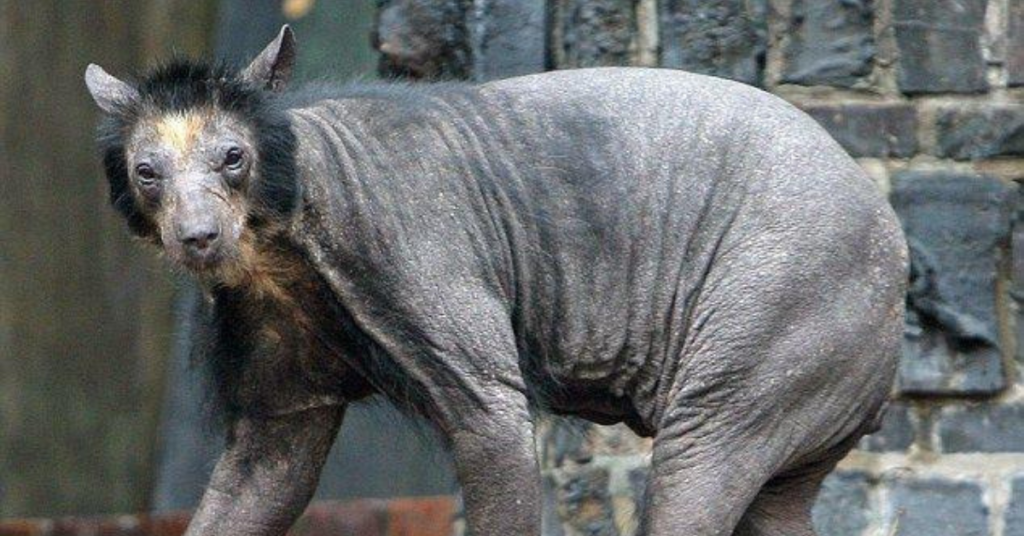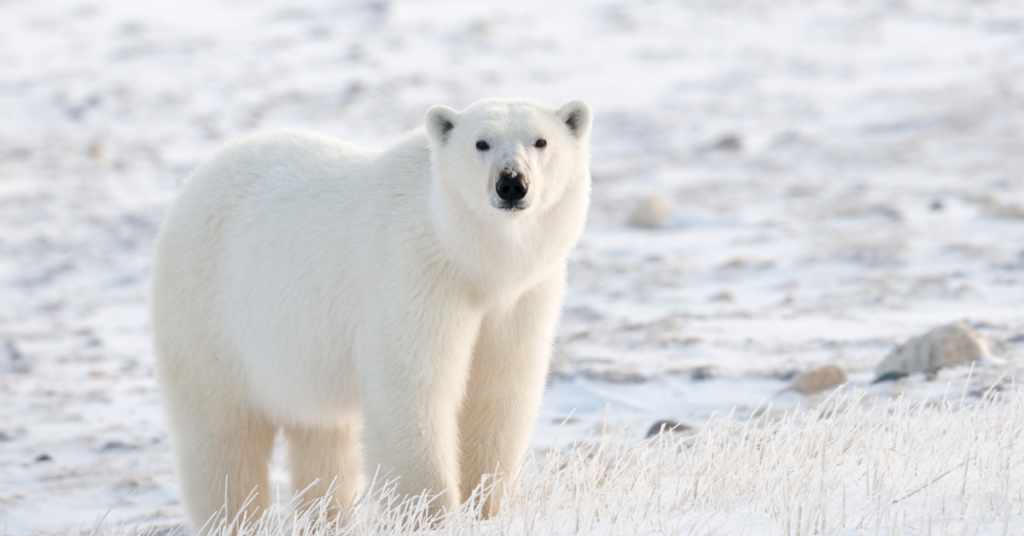Have you ever wondered what a shaved polar bear looks like? Well, get ready to be amazed! In this article, we’ll take you on a journey into the fascinating world of polar bears and reveal the secrets behind shaving their fur.
You’ll discover that their fur is not actually white, but transparent, and how shaving helps scientists in their research and conservation efforts.
So, come along and uncover the hidden beauty of shaved polar bears!
Key Takeaways
- Shaving polar bears may be necessary for treating wounds or infections on their skin that are difficult to access with their thick fur.
- Shaving the remaining hair can alleviate symptoms associated with alopecia, a condition that causes fur loss in polar bears.
- Shaving polar bears facilitates data collection and medical procedures for researchers studying their physiology and behavior.
- Understanding polar bear physiology through shaving and research is essential for conservation efforts to protect their population and preserve their unique adaptations in the Arctic habitat.
Reasons for Shaving Polar Bears
Shaving polar bears is necessary for accessing and treating wounds or infections on their skin. The thick fur of polar bears presents a challenge when it comes to treating these issues effectively. That’s where shaving comes in. By removing the hair, we can gain proper access to the affected areas and provide the necessary treatment.
But the benefits of shaving polar bears go beyond just medical reasons. Shaving allows scientists to collect valuable data and conduct important research. Whether it’s taking blood samples or attaching tracking devices, shaving makes these tasks easier and less stressful for the bears. It also provides a clear view of their skin and hair, allowing for more accurate data collection.
This understanding of polar bear physiology is crucial for conservation efforts. By studying their skin and hair, we can better protect their population and preserve their unique adaptations. So, while shaving polar bears may seem like a daunting task, it serves a greater purpose in ensuring the well-being and survival of these magnificent creatures.
Transparent Fur of Polar Bears
The transparent fur of polar bears, an important adaptation for their Arctic environment, helps camouflage them and protect them from the sun. Contrary to popular belief, polar bear fur isn’t actually white. The long, coarse guard hairs that protect the undercoat are hollow and transparent, while the undercoat hairs are also colorless. This unique feature allows the polar bear to blend seamlessly into its icy surroundings, making it nearly invisible to prey and predators alike.
But the benefits of transparent fur don’t stop at camouflage. The fur is oily and water-repellent, keeping the bear warm, dry, and protected from the sun’s harmful rays. In the harsh Arctic environment, where temperatures can plummet to -50 degrees Celsius, this insulation is crucial for the polar bear’s survival. The fur also acts as a natural sunscreen, shielding the bear’s black skin from the sun and preventing sunburns.
Recently, there’s been a controversial photoshoot featuring shaved polar bears to showcase their transparent fur. While the images may be striking, it’s important to remember that shaving polar bears should only be done for necessary reasons, such as medical procedures or research purposes. Shaving the fur provides scientists with a clear view of the skin and hair, allowing for more accurate data collection and a better understanding of polar bear physiology.
Black Skin of Polar Bears
With its white fur shaved off, the polar bear reveals its strikingly black skin, an adaptation that serves multiple purposes in its Arctic habitat. Here’s how the black skin of polar bears helps them survive in their icy environment:
- Sunlight absorption: The black skin of polar bears absorbs sunlight, helping to warm up their bodies. In the extreme cold of the Arctic, this is essential for maintaining their body temperature.
- Heat regulation: The thick fur of polar bears acts as insulation, trapping the heat close to their black skin. This helps them regulate their body temperature and stay warm in the frigid Arctic conditions.
- Protection from the sun’s harmful rays: The black skin also acts as a natural protection against the sun. The Arctic may have long periods of sunlight during the summer, and the black skin helps prevent sunburn and other harmful effects.
- Camouflage: While the black skin may seem counterintuitive in a white, snowy environment, it actually helps polar bears blend in. When viewed from above, the black skin against the white snow creates a disruptive pattern, making it harder for predators or prey to spot them.
The black skin of polar bears is a remarkable adaptation that plays a vital role in their survival and success in the harsh Arctic habitat.

Other Adaptations of Polar Bears
Now let’s explore some additional adaptations of polar bears. In addition to their unique fur and black skin, polar bears possess several other remarkable adaptations that enable them to thrive in their Arctic habitat. One crucial adaptation is their diet.
Polar bears are apex predators and primarily feed on seals. Their powerful jaws, sharp teeth, and strong muscles allow them to catch and consume their prey. They’re also excellent swimmers, capable of diving into the freezing waters to hunt seals beneath the ice.
Another essential adaptation of polar bears is their reproductive strategy. Female polar bears undergo delayed implantation, meaning that the fertilized eggs don’t immediately implant in the uterus. This allows the female to time the birth of her cubs to coincide with the availability of food and optimal conditions.
Polar bear cubs are born in dens in the winter, where they stay until they’re strong enough to venture outside. The mothers provide nourishment and protection to their young until they’re ready to survive on their own.
Understanding these adaptations, including their diet and reproductive strategies, is crucial for the conservation of polar bears. By studying their physiology and behavior, scientists can develop effective strategies to protect their populations and preserve their unique adaptations.
It’s through these efforts that we can ensure the survival of these magnificent creatures in their Arctic home.
Importance of Polar Bear Research and Conservation
To understand the importance of polar bear research and conservation, you must recognize the valuable data it provides for protecting their population and preserving their unique adaptations. Here are four reasons why polar bear research and conservation are crucial:
- Polar bear tracking: Research allows scientists to track and monitor polar bears, providing insights into their behavior, migration patterns, and population dynamics. This information helps identify critical habitats and informs conservation strategies.
- Arctic habitat preservation: By studying polar bears, researchers gain a better understanding of their habitat requirements and the impact of climate change on their environment. This knowledge is essential for advocating for Arctic habitat preservation and mitigating the effects of global warming.
- Species conservation: Polar bears are a vulnerable species facing numerous threats, including habitat loss and declining sea ice. Research helps identify conservation priorities and develop effective strategies to protect polar bear populations and their ecosystems.
- Balancing human-wildlife interactions: Understanding polar bear behavior and ecology is crucial for managing human-wildlife interactions. Research provides insights into reducing conflicts between polar bears and human activities such as hunting, tourism, and resource extraction.
Polar bear research and conservation play a vital role in ensuring the long-term survival of these magnificent creatures and the preservation of their Arctic habitat. By supporting these efforts, we can contribute to the protection of a species that isn’t only an icon of the Arctic but also a critical indicator of the health of our planet.

Erzsebet Frey (Eli Frey) is an ecologist and online entrepreneur with a Master of Science in Ecology from the University of Belgrade. Originally from Serbia, she has lived in Sri Lanka since 2017. Eli has worked internationally in countries like Oman, Brazil, Germany, and Sri Lanka. In 2018, she expanded into SEO and blogging, completing courses from UC Davis and Edinburgh. Eli has founded multiple websites focused on biology, ecology, environmental science, sustainable and simple living, and outdoor activities. She enjoys creating nature and simple living videos on YouTube and participates in speleology, diving, and hiking.

